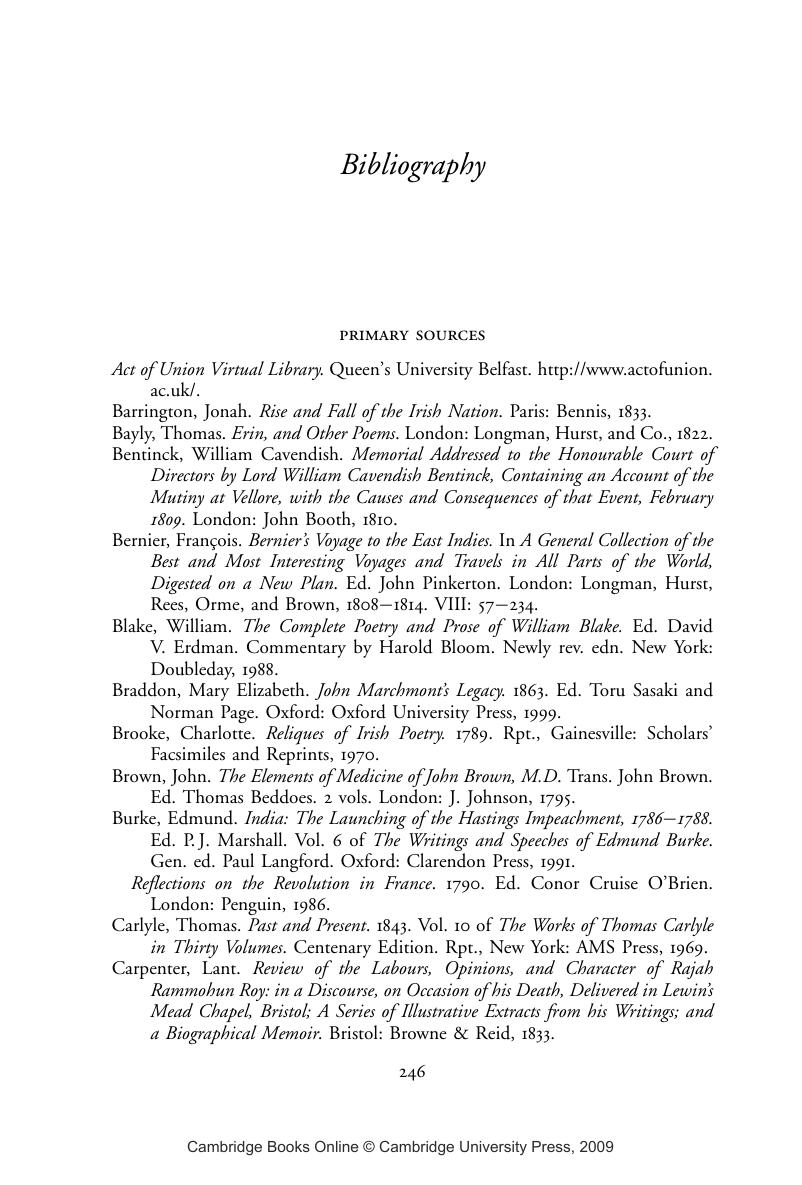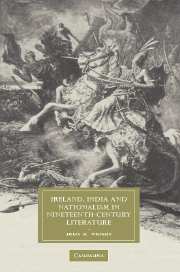Book contents
- Frontmatter
- Contents
- Acknowledgments
- Introduction: Insensible Empire
- PART I National Feeling, Colonial Mimicry, and Sympathetic Resolutions
- PART II Colonial Gothic and the Circulation of Wealth
- Conclusion: The Wild Irish Boy in India
- Notes
- Bibliography
- Index
- CAMBRIDGE STUDIES IN NINETEENTH-CENTURY LITERATURE AND CULTURE
- References
Bibliography
Published online by Cambridge University Press: 31 July 2009
- Frontmatter
- Contents
- Acknowledgments
- Introduction: Insensible Empire
- PART I National Feeling, Colonial Mimicry, and Sympathetic Resolutions
- PART II Colonial Gothic and the Circulation of Wealth
- Conclusion: The Wild Irish Boy in India
- Notes
- Bibliography
- Index
- CAMBRIDGE STUDIES IN NINETEENTH-CENTURY LITERATURE AND CULTURE
- References
Summary

- Type
- Chapter
- Information
- Ireland, India and Nationalism in Nineteenth-Century Literature , pp. 246 - 264Publisher: Cambridge University PressPrint publication year: 2007

